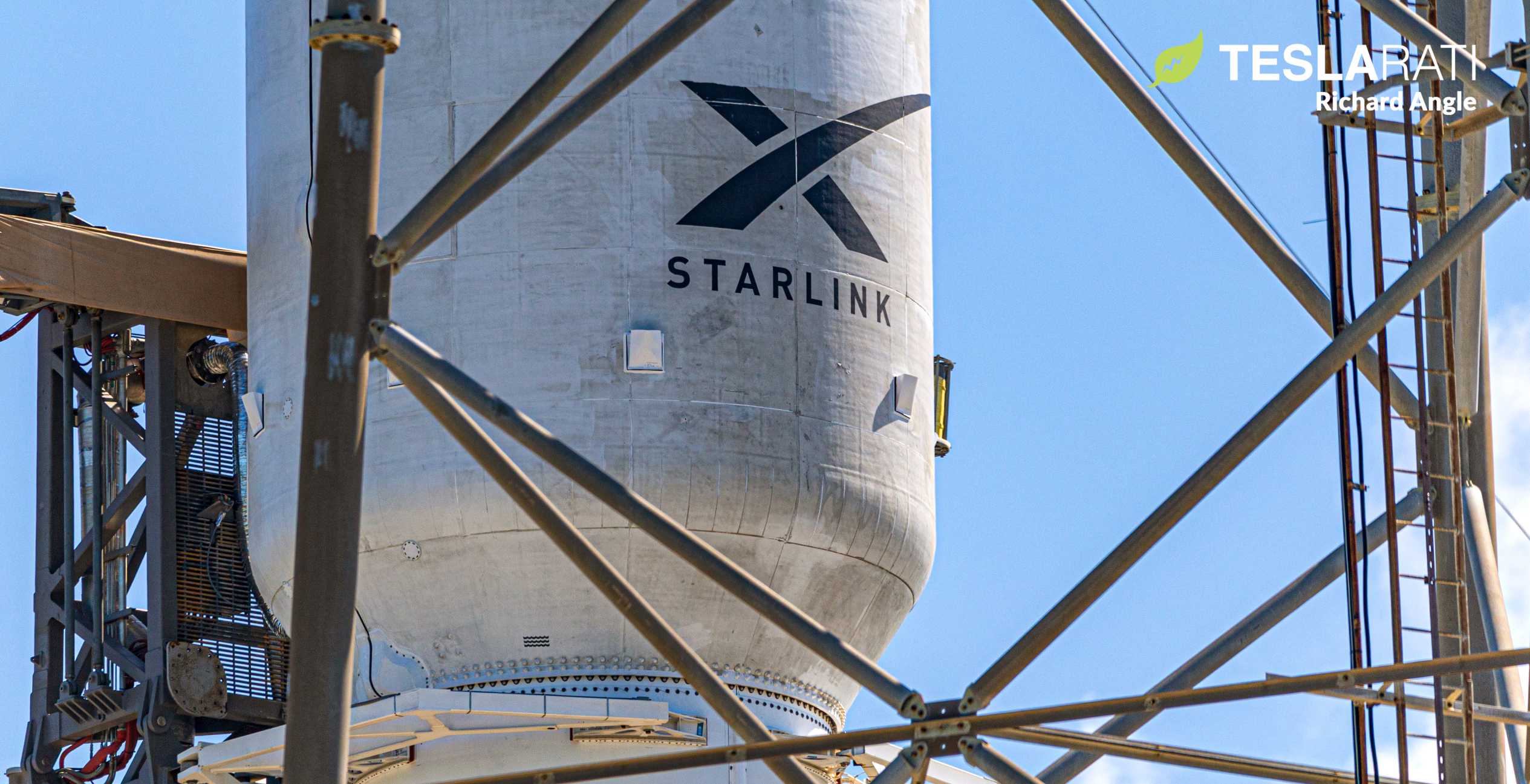
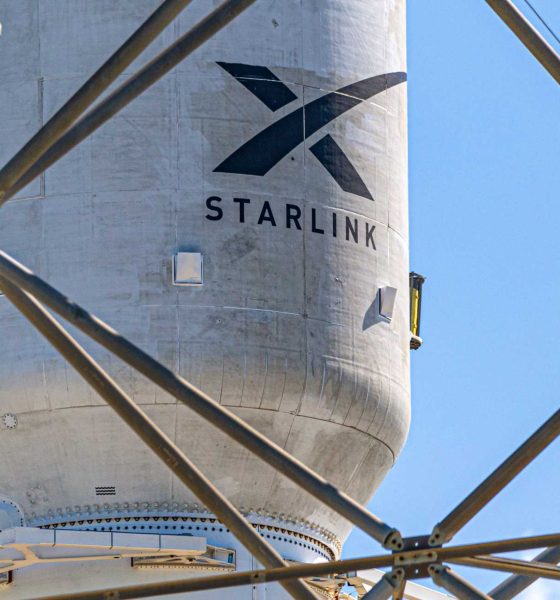
News
SpaceX Starlink user terminals tested by board members as beta nears
SpaceX’s nascent Starlink user terminal technology – the consumer hardware that will connect customers to a vast space-based internet constellation – is being put through its paces in a series of closed tests with employees, board members, and investors.
This news comes around the same time as SpaceX took two significant steps towards a beta debut for Starlink internet service, completing the eighth successful launch of Starlink v1.0 satellites and opening a new web portal where anyone can sign up for updates on service availability in their region. According to COO and President Gwynne Shotwell, SpaceX means to begin rolling out Starlink internet service once 14 launches are completed and ~840 satellites are in orbit. Whether or not that figure includes SpaceX’s first launch of 60 ‘v0.9’ Starlink satellites back in May 2019, it’s safe to say that that 14-launch milestone is just two or three months away if the company can sustain and average of two to three launches per month.
Regardless of the spectacular, well-publicized launch component of SpaceX’s Starlink internet satellite constellation, apparent user terminal testing helps shed light on the customer-facing side of the venture. While currently just shy of invisible, the user terminal is at least as difficult and important a problem to solve as Starlink satellite production and launch – if not more important and more challenging.
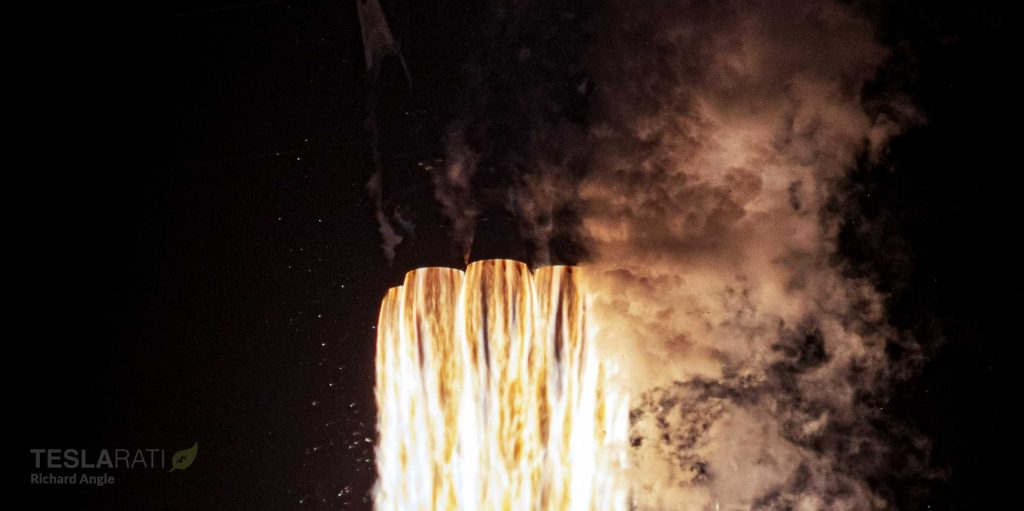
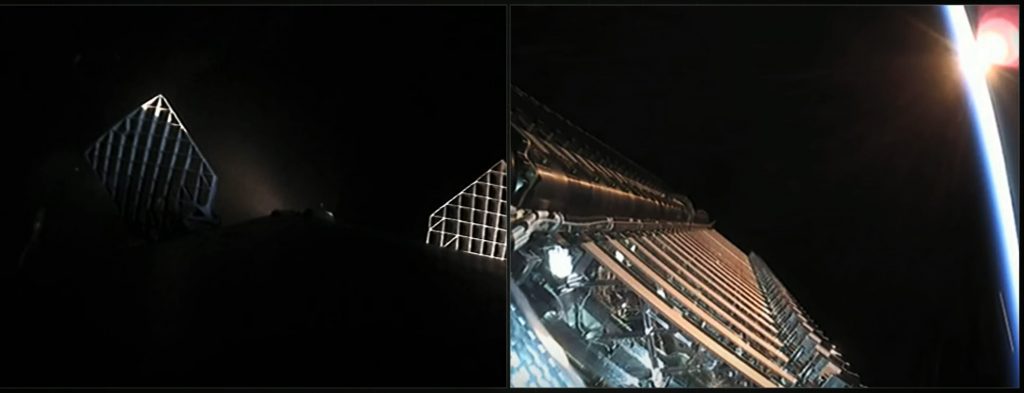
As previously discussed on Teslarati, user terminals could easily make or break Starlink regardless of dozens of successful launches or the quality of satellites, ground stations, or the network in general.
“Aside from the quality, reliability, and usability of the network itself (can it stream YouTube/Netflix videos? Game? Teleconference?), the user terminals customers need in order to access said network will also be under the microscope. If SpaceX is unable to mass-produce millions of high-quality, reliable user terminals and ensure that they are easy and intuitive to use, the quality of the Starlink satellite network itself would be effectively irrelevant.
The problem is familiar for users of ISPs (i.e. a majority of humans): your WiFi router and modem can be top-of-the-line but bad internet service makes the quality of your home network irrelevant. Vice-versa, a bad router or modem will also make high-quality internet service effectively irrelevant. In other words, SpaceX fundamentally needs to ensure that neither component threatens the user experience.”
Teslarati.com – April 23rd, 2020
In other words, low-quality, buggy user terminals that are hard to set up or require frequent babysitting to ensure a stable connection would make the quality of the satellites SpaceX launches and the ground-based infrastructure it installs irrelevant. Hence the closed focus group-style testing like that described above by investor Steve Jurvetson.

According to Jurvetson, board members (him included) were invited to SpaceX on June 11th or 12th to try out Starlink user terminal prototypes the company is in the midst of developing. Specifically, each board member was given a terminal and asked to set it up themselves in a friendly race to the finish line (establishing an internet connection). Steve ultimately said that the prototype he set up offered the “simplest out-of-box experience imaginable.”
In fact, SpaceX has already been performing similar tests for several months according to a virtual seminar hosted by data company Tape Ark earlier this month, performing a similar setup test but with dozens of employees’ spouses rather than board members. While board members of a high-tech rocket company and families of its employees aren’t exactly a random sample of American (or worldwide) consumers, all non-employees tested thus far have been able to set up Starlink terminals and establish an internet connection without issue. That’s no mean feat when one considers that the alternative is setting up a modem and router and activating internet service through an ISP like Comcast, a task that can easily destroy the sanity of even technically-savvy users.
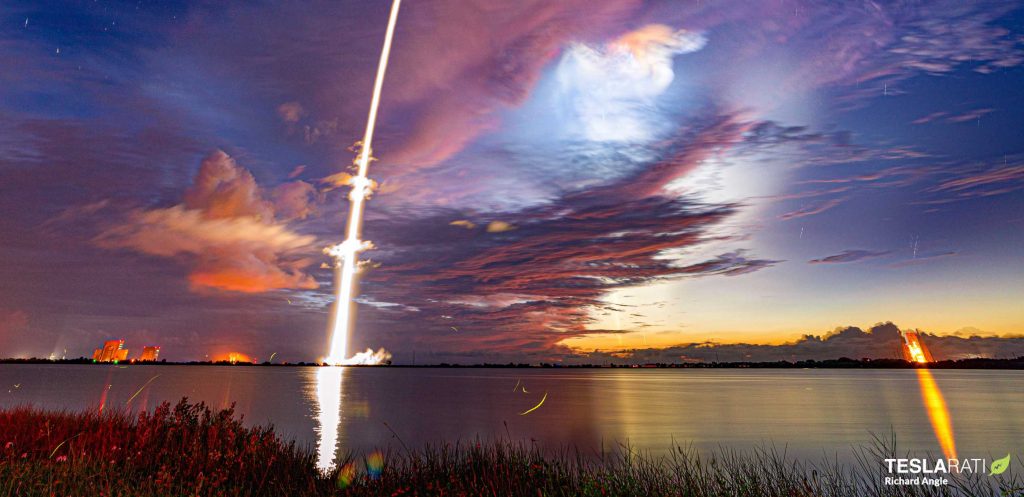
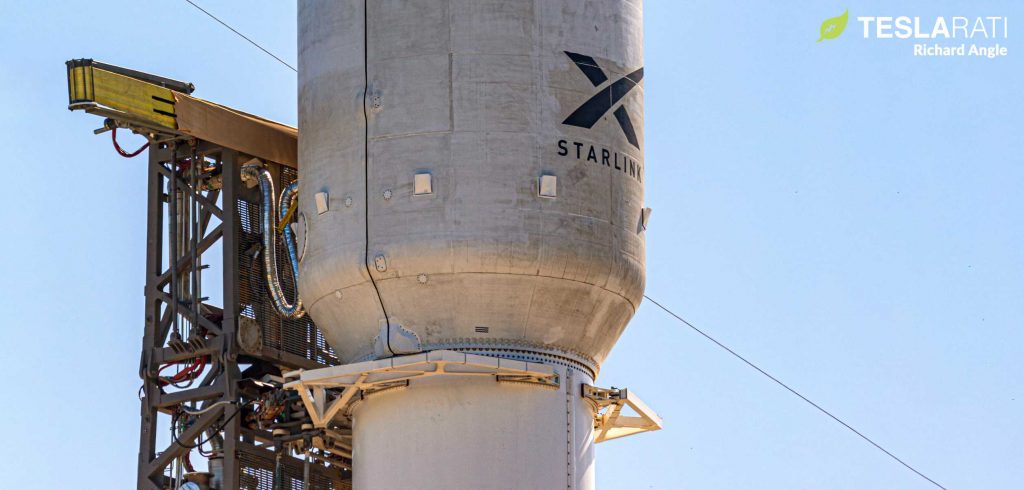
CEO Elon Musk himself has always made it clear that simplicity is a priority for Starlink user terminals, recently stating that the final product should be even simpler than the prototypes that board and family members alike had zero difficulty setting up, requiring customers to simply “plug [it] in & point [it] at [the] sky”. Given that SpaceX could be ready to roll out Starlink internet service in some capacity as early as August or September, it’s safe to say that the mysterious “UFO-on-a-stick” user terminal wont remain a secret for much longer.
Specs-wise, the same virtual seminar revealed that a normal level of connectivity for a user terminal will be around 100 megabits per second (mbps) down and 40 mbps up. According to Musk, Starlink internet latency (often known as ping) might actually be better than fiber internet, offering ~20 ms for Version 1 and ~8 ms when Version 2 debuts (ETA unknown).
Check out Teslarati’s Marketplace! We offer Tesla accessories, including for the Tesla Cybertruck and Tesla Model 3.

Elon Musk
Elon Musk’s X will start using a Tesla-like software update strategy
The initiative seems designed to accelerate updates to the social media platform, while maintaining maximum transparency.

Elon Musk’s social media platform X will adopt a Tesla-esque approach to software updates for its algorithm.
The initiative seems designed to accelerate updates to the social media platform, while maintaining maximum transparency.
X’s updates to its updates
As per Musk in a post on X, the social media company will be making a new algorithm to determine what organic and advertising posts are recommended to users. These updates would then be repeated every four weeks.
“We will make the new 𝕏 algorithm, including all code used to determine what organic and advertising posts are recommended to users, open source in 7 days. This will be repeated every 4 weeks, with comprehensive developer notes, to help you understand what changed,” Musk wrote in his post.
The initiative somewhat mirrors Tesla’s over-the-air update model, where vehicle software is regularly refined and pushed to users with detailed release notes. This should allow users to better understand the details of X’s every update and foster a healthy feedback loop for the social media platform.
xAI and X
X, formerly Twitter, has been acquired by Elon Musk’s artificial intelligence startup, xAI last year. Since then, xAI has seen a rapid rise in valuation. Following the company’s the company’s upsized $20 billion Series E funding round, estimates now suggest that xAI is worth tens about $230 to $235 billion. That’s several times larger than Tesla when Elon Musk received his controversial 2018 CEO Performance Award.
As per xAI, the Series E funding round attracted a diverse group of investors, including Valor Equity Partners, Stepstone Group, Fidelity Management & Research Company, Qatar Investment Authority, MGX, and Baron Capital Group, among others. Strategic partners NVIDIA and Cisco Investments also continued support for building the world’s largest GPU clusters.
News
Tesla FSD Supervised wins MotorTrend’s Best Driver Assistance Award
The decision marks a notable reversal for the publication from prior years, with judges citing major real-world improvements that pushed Tesla’s latest FSD software ahead of every competing ADAS system.

Tesla’s Full Self-Driving (Supervised) system has been named the best driver-assistance technology on the market, earning top honors at the 2026 MotorTrend Best Tech Awards.
The decision marks a notable reversal for the publication from prior years, with judges citing major real-world improvements that pushed Tesla’s latest FSD software ahead of every competing ADAS system. And it wasn’t even close.
MotorTrend reverses course
MotorTrend awarded Tesla FSD (Supervised) its 2026 Best Tech Driver Assistance title after extensive testing of the latest v14 software. The publication acknowledged that it had previously criticized earlier versions of FSD for erratic behavior and near-miss incidents, ultimately favoring rivals such as GM’s Super Cruise in earlier evaluations.
According to MotorTrend, the newest iteration of FSD resolved many of those shortcomings. Testers said v14 showed far smoother behavior in complex urban scenarios, including unprotected left turns, traffic circles, emergency vehicles, and dense city streets. While the system still requires constant driver supervision, judges concluded that no other advanced driver-assistance system currently matches its breadth of capability.
Unlike rival systems that rely on combinations of cameras, radar, lidar, and mapped highways, Tesla’s FSD operates using a camera-only approach and is capable of driving on city streets, rural roads, and freeways. MotorTrend stated that pure utility, the ability to handle nearly all road types, ultimately separated FSD from competitors like Ford BlueCruise, GM Super Cruise, and BMW’s Highway Assistant.
High cost and high capability
MotorTrend also addressed FSD’s pricing, which remains significantly higher than rival systems. Tesla currently charges $8,000 for a one-time purchase or $99 per month for a subscription, compared with far lower upfront and subscription costs from other automakers. The publication noted that the premium is justified given FSD’s unmatched scope and continuous software evolution.
Safety remained a central focus of the evaluation. While testers reported collision-free operation over thousands of miles, they noted ongoing concerns around FSD’s configurable driving modes, including options that allow aggressive driving and speeds beyond posted limits. MotorTrend emphasized that, like all Level 2 systems, FSD still depends on a fully attentive human driver at all times.
Despite those caveats, the publication concluded that Tesla’s rapid software progress fundamentally reshaped the competitive landscape. For drivers seeking the most capable hands-on driver-assistance system available today, MotorTrend concluded Tesla FSD (Supervised) now stands alone at the top.
News
Elon Musk’s Grokipedia surges to 5.6M articles, almost 79% of English Wikipedia
The explosive growth marks a major milestone for the AI-powered online encyclopedia, which was launched by Elon Musk’s xAI just months ago.

Elon Musk’s Grokipedia has grown to an impressive 5,615,201 articles as of today, closing in on 79% of the English Wikipedia’s current total of 7,119,376 articles.
The explosive growth marks a major milestone for the AI-powered online encyclopedia, which was launched by Elon Musk’s xAI just months ago. Needless to say, it would only be a matter of time before Grokipedia exceeds English Wikipedia in sheer volume.
Grokipedia’s rapid growth
xAI’s vision for Grokipedia emphasizes neutrality, while Grok’s reasoning capabilities allow for fast drafting and fact-checking. When Elon Musk announced the initiative in late September 2025, he noted that Grokipedia would be an improvement to Wikipedia because it would be designed to avoid bias.
At the time, Musk noted that Grokipedia “is a necessary step towards the xAI goal of understanding the Universe.”
Grokipedia was launched in late October, and while xAI was careful to list it only as Version 0.1 at the time, the online encyclopedia immediately earned praise. Wikipedia co-founder Larry Sanger highlighted the project’s innovative approach, noting how it leverages AI to fill knowledge gaps and enable rapid updates. Netizens also observed how Grokipedia tends to present articles in a more objective manner compared to Wikipedia, which is edited by humans.
Elon Musk’s ambitious plans
With 5,615,201 total articles, Grokipedia has now grown to almost 79% of English Wikipedia’s article base. This is incredibly quick, though Grokipedia remains text-only for now. xAI, for its part, has now updated the online encyclopedia’s iteration to v0.2.
Elon Musk has shared bold ideas for Grokipedia, including sending a record of the entire knowledge base to space as part of xAI’s mission to preserve and expand human understanding. At some point, Musk stated that Grokipedia will be renamed to Encyclopedia Galactica, and it will be sent to the cosmos.
“When Grokipedia is good enough (long way to go), we will change the name to Encyclopedia Galactica. It will be an open source distillation of all knowledge, including audio, images and video. Join xAI to help build the sci-fi version of the Library of Alexandria!” Musk wrote, adding in a later post that “Copies will be etched in stone and sent to the Moon, Mars and beyond. This time, it will not be lost.”








